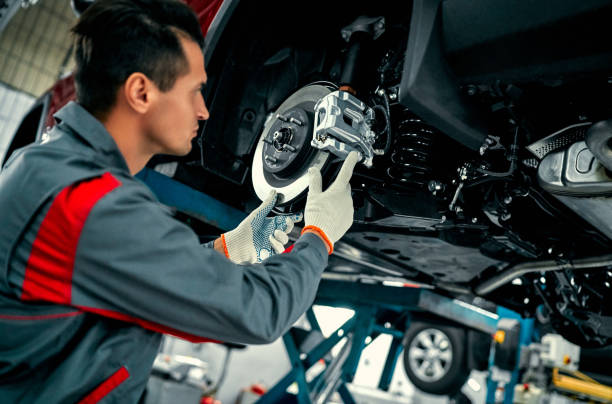
How Are Automotive Brake Systems Shaping the Future of Vehicle Safety?
Share
The Automotive Brake System Market is undergoing a major transformation, moving beyond purely hydraulic components toward digital, software‑defined solutions that promise enhanced safety, efficiency, and flexibility. In this blog, we explore the latest developments from leading suppliers—Nexteer, ZF, and Advik—and compare traditional hydraulic brakes with electro‑mechanical and brake‑by‑wire technologies.
What Is the Electro‑Mechanical Brake System and How Does It Work?
According to the Nexteer Report, Automotive’s Electro‑Mechanical Brake (EMB) system represents the next generation of brake‑by‑wire technology. Launched April 15, 2025, EMB replaces hydraulic fluid and mechanical linkages with electronic control and actuators at each wheel, enabling:
- High‑precision braking powered by wheel‑mounted actuators
- Software‑defined pedal feel, adjustable via vehicle software
- Improved NVH (noise, vibration, and harshness) performance—critical for quiet electric vehicles
- Modular architecture that integrates seamlessly into “motion‑by‑wire” chassis control strategies.
Summary:
- EMB delivers digital, high‑precision braking without hydraulic fluid.
- The modular design supports coordinated control of steering and braking.
How Is Brake‑by‑Wire Technology Being Adopted by Global OEMs?
According to Autocar Professional Report, in January 2025, ZF secured a contract to equip nearly 5 million vehicles with a hybrid brake‑by‑wire system over the life of the agreement. This system combines:
Key benefits include:
- Software‑defined vehicle (SDV) enablement, laying groundwork for autonomous emergency braking and steering interventions
- Full energy recuperation during braking for hybrid and electric vehicles
- Redundant fallback options up to fully automated driving levels
- Cost and CO₂ efficiency via a ‘dry’ brake‑by‑wire rear and proven hydraulic front.
Summary:
- ZF’s hybrid brake‑by‑wire system will appear on millions of vehicles, blending EMB with traditional hydraulics.
- The deal underscores the shift toward software‑centric chassis solutions.
Why Is Advik Acquiring Powersports MTG?
According to Business Standard Report, On January 7, 2025, Advik announced the acquisition of German braking system specialist Powersports MTG through its Singapore subsidiary. The strategic rationale includes:
- Access to 60 + patents in hydraulic braking and clutch technology
- Expansion into Europe, establishing a local footprint for premium two‑wheeler safety components
- Revenue scale, as Powersports MTG closed 2024 with revenue of approximately €30 million
- Broadened product portfolio for both internal combustion engine (ICE) and electric motorcycles and scooters
Summary:
- The acquisition strengthens Advik’s position in premium two‑wheeler braking systems and R&D capabilities.
- It accelerates Advik’s vision to be a global leader in advanced braking solutions.
Next Steps: Actionable Takeaways
- Evaluate Integration Roadmaps
- Automakers should map out how to phase in EMB and brake‑by‑wire solutions alongside existing hydraulic architectures.
- Prioritize Software Security
- With increased electronic control, invest in cybersecurity measures and functional safety compliance.
- Leverage Modular Platforms
- Use shared actuators and control units across steering and braking to reduce costs and speed up development.
- Plan for Maintenance Evolution
- Train service networks on software calibration and actuator diagnostics instead of traditional fluid checks.
- Monitor Regulatory Trends
- Stay ahead of evolving safety standards that may mandate redundancy and electronic control in brake systems.